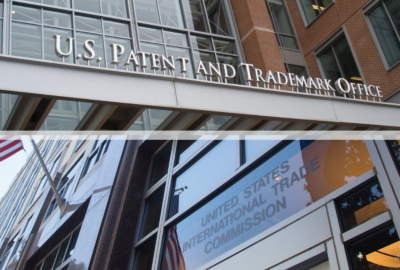
USPTO’s 19 projects to stabilize, modernize IT systems
Jamie Holcombe, the chief information officer of the Patent and Trademark Office, said among his first projects has been to fix the technology that runs the...
Best listening experience is on Chrome, Firefox or Safari. Subscribe to Federal Drive’s daily audio interviews on Apple Podcasts or PodcastOne.
The U.S. Patent and Trademark Office has issued more than 10 million patents and millions of trademarks, but up until now there was no good way to search through the troves of data.
The agency is testing natural language processing to let patent examiners and trademark attorneys more easily find historical information.
Jamie Holcombe, the chief information officer of the Patent and Trademark Office, said the agency’s new approach to search is one of about 19 ongoing IT modernization projects.

“One of the first things I did when I came on board was take some of the classes for how to apply for a patent and a day in the life of an examiner. One of the great things I found out is they are actually using Boolean searches in many of the ways to look up ‘prior art’ is relevant to the applicant,” Holcombe said on Ask the CIO. “Using a Boolean search from my computer science 101 days and having these engineers actually parse out 20 or 30 lines of code is very archaic. We do have a new search tool that is available for them and we are about to publish it.”
USPTO is developing the new search tool using natural language processing and an easier to use interface.
Holcombe, who joined USPTO in February, said the new tool will let examiners and attorneys put context around their searches instead of being limited to the limited Boolean logic.
“I’m hoping that this actually improves the time examiners have when they can narrow down their searches for relevant prior art,” he said.
The search tool also will let examiners tailor the capabilities for their specific domain. Holcombe said that is where things like artificial intelligence and machine learning can help.
Holcombe said the goal is to get the search accuracy up to more than 80 percent before bringing in more experts to help fine tune the technology.
Search is just one of about 19 IT modernization efforts happening across the Commerce Department bureau. He said the focus on most of those projects are improving the patent or trademark processes.
Holcombe said the first step toward modernization is to stabilize current systems to ensure the applications can keep running for the short term.
“We have to have that fail over and redundant systems in place before we put those new applications out there. The thing is, if I can stabilize by modernizing, I’ll do that. I don’t want to spend money that I’ll have to throw away,” he said. ‘We are taking our technical debt and we are overcoming all of our end of life products as well as upgrading to current levels. Once that stabilization is complete, we will concentrate on that for the next 12-to-18 months. Then, once that’s complete, in the 12-to-36 month timeframe that’s when I go for the modernization.”
Related Stories
He is using a stop light approach to deciding which programs are cloud ready in immediate future.
“Just because you can go to the cloud, doesn’t mean you should. You have to have a good procurement strategy as well as a design and architectural philosophy,” Holcombe said. “I was surprised there wasn’t a prioritization across the USPTO. Each individual unit had their priorities and they all knew what they were, but there hadn’t been a prioritization effort. So once we stabilized, we were able to prioritize all the systems based on their criticality for business functions, not just for IT. Based on those priorities, we’ve laid out a good budget for fiscal 2020 and 2021 and we are executing against that right now.”
The USPTO’s 2020 budget request for technology came in at $654 million, which was about 9% less than what the agency received this year.
Holcombe said one of the underlying themes he’s promoted over the last six months is the ability to loosely couple all new technology, meaning don’t put something into deployment unless you can rip it out.
“Having that design philosophy will help us because in five years we don’t know what the technology will be or what the disruptors will be. We want to be able to take advantage of those disruptors when they happen,” he said. “If you don’t design for taking things out, then you are really losing the bigger picture of taking advantage of technologies when they come to for.”
Copyright © 2025 Federal News Network. All rights reserved. This website is not intended for users located within the European Economic Area.
Jason Miller is executive editor of Federal News Network and directs news coverage on the people, policy and programs of the federal government.
Follow @jmillerWFED






